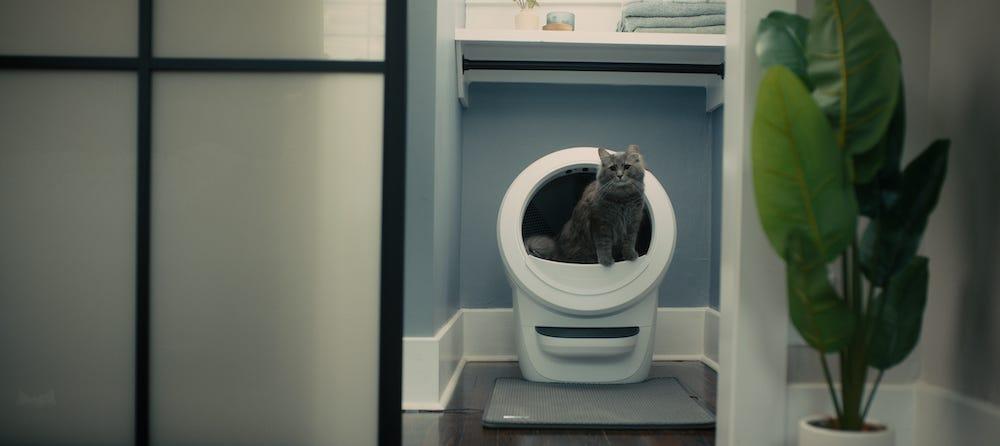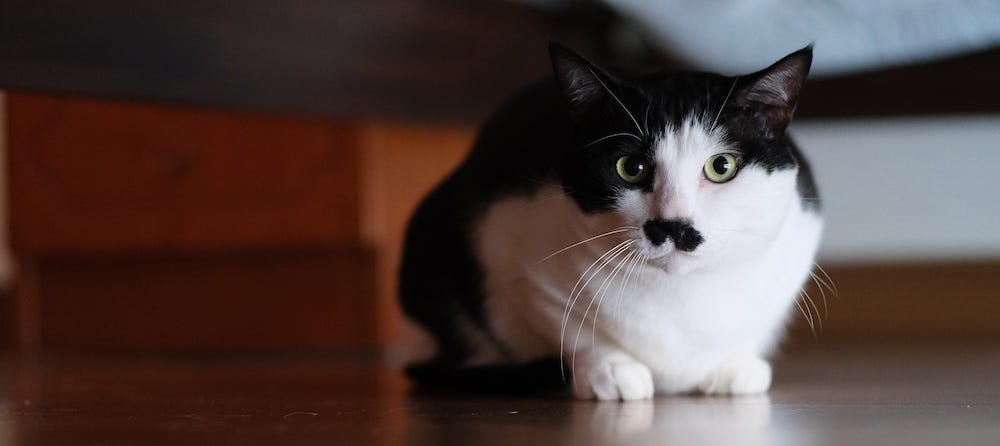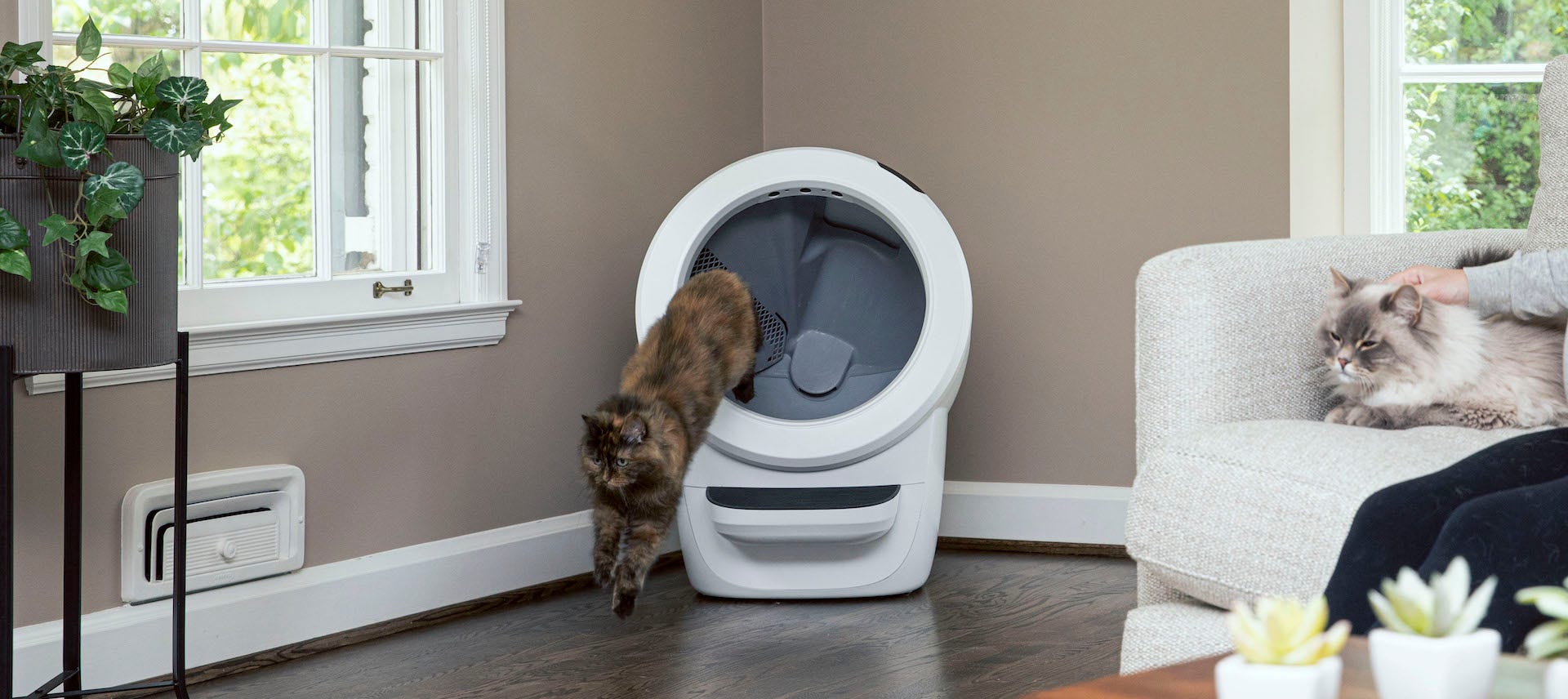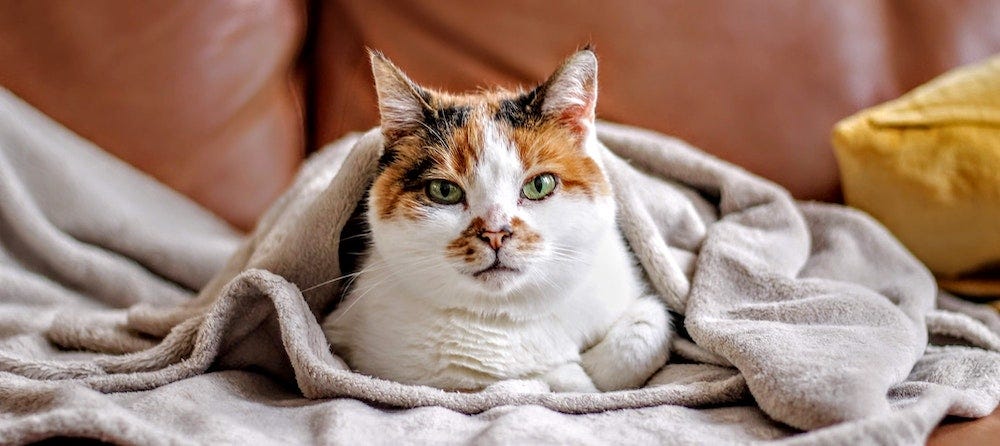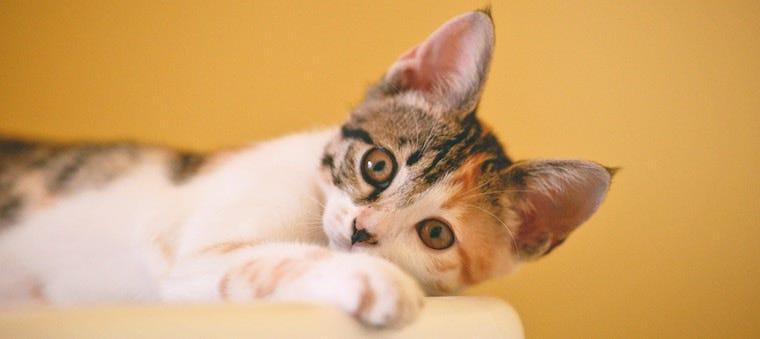Is your cat going to the litter box every few minutes? If your cat keeps going to the litter box but nothing happens, or you notice your cat peeing frequently (but with little to no urine), it may indicate a medical problem or concern that warrants a veterinarian’s attention.
Regular vet check-ups are crucial to staying up-to-date on your cat's health, but you should still consistently monitor their behavior and health at home. If your cat starts acting out of the ordinary, such as making constant litter box trips, this may warrant a visit to the vet.
Cat UTIs, bladder infections, or urethral obstructions are just a few of the medical conditions that can cause constant urination attempts. Your cat’s urinary health is of the utmost importance, so we’ll be discussing potential symptoms, diagnoses, and treatments of why your cat is peeing a lot.
How often do cats pee?
An average healthy cat typically pees two to four times per day. Going once per day or not at all may mean that your cat is dehydrated or holding their pee. If your cat is peeing a lot more than two or three times per day, medical issues may be to blame. They may also just be playing with the litter box itself. You’ll want to determine if your cat is actually going to the bathroom during their frequent litter box visits.
Why is my cat going to the litter box every few minutes?
Cats can be very particular about their litter box environment. If you're wondering what is normal cat litter box behavior or how often cats pee versus behavior that could indicate a medical problem, keep reading.

Dirty litter box
Your cat litter box may not be clean enough. If you use a traditional litter box and don’t scoop every day, your cat may be making frequent “unsatisfactory” trips to the litter box because the box isn’t as clean as your cat would prefer.
Veterinarians emphasize that a clean litter box is essential to good cat health. There are two golden rules for owning traditional litter boxes: Scoop daily and have n+1 traditional litter boxes per cat (so if you have 2 cats, you need 2+1 litter boxes, or a total of 3). A single self-cleaning litter box, like Litter Robot 4, can accommodate up to 4 cats and removes the need for daily manual scooping.
However, even with a clean litter box or a self-cleaning litter box, if your cat keeps going to the litter box but nothing happens, there are a few medical issues that may be occurring.
Medical issues
Frequent litter box visits are often an indication of health issues. It’s important to call your vet and describe your cat’s symptoms. Your vet may ask you to bring your cat in for a proper diagnosis, or even tell you to go to an emergency clinic. We'll cover health conditions that may cause your cat to frequently visit the litter box and how to best treat it.
Possible medical issues indicated by frequent feline urination
Feline idiopathic cystitis (FIC)
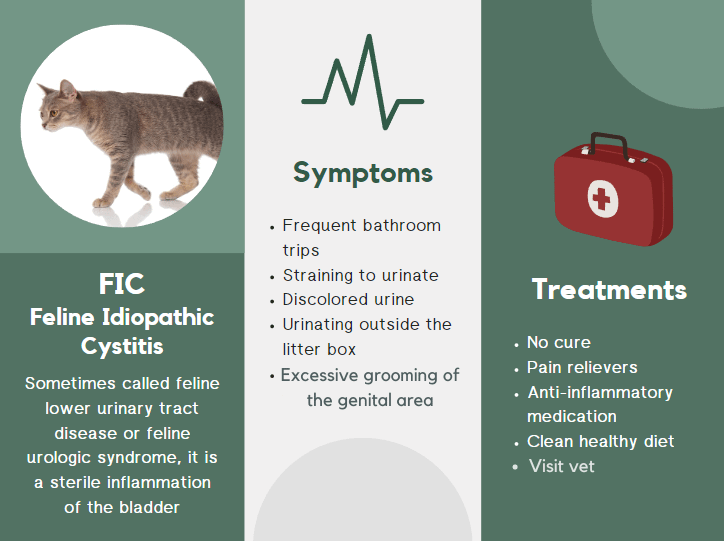
The majority of the time, your cat’s urinary symptoms are the result of feline idiopathic cystitis (sometimes called feline lower urinary tract disease or feline urologic syndrome), or a sterile inflammation of the bladder.
Signs of FIC include, but are not limited to:
- More than 3-4 trips to the litter box a day
- Excessive grooming of the genital area
- Squatting to urinate in front of you
- Urinating in weird places, like on plastic bags, on your laundry, in the bathtub or sink
- Discolored urine (e.g., blood-tinged)
- Absence of large urine clumps in the litter box
- Straining to urinate
- Acting painful (e.g., meowing or crying out when using the litter box)
- Abnormal-smelling urine
Cat FIC treatment
There is no medication or cure that directly treats FIC. However, there are ways to help aid and treat your cat's pain level. Your vet will provide options to relieve the discomfort of your cat, and may prescribe pain relievers or anti-inflammatory medications to ease the pain. At home, focus on a clean, healthy diet and a comfortable environment.
Urinary tract infection (UTI)
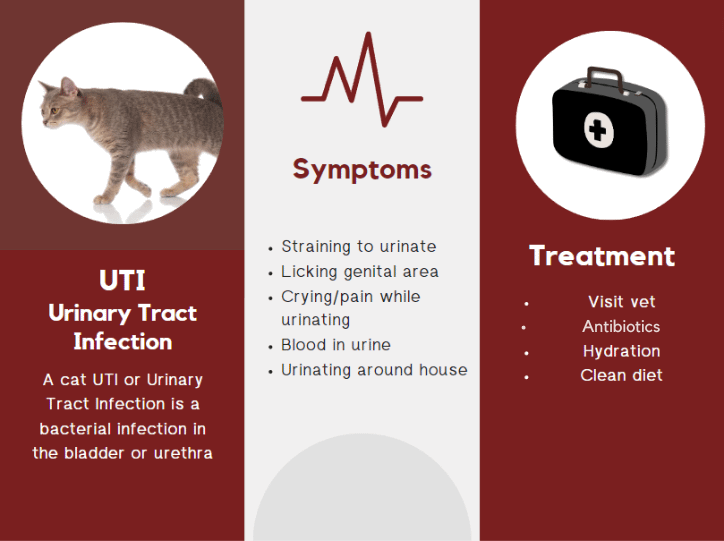
Less likely but still possible, your cat may be experiencing a urinary tract infection, or UTI. Cat UTIs are more often seen in older felines (greater than 10 years of age). With a UTI, you’re more likely to notice small amounts of foul-smelling, blood-tinged urine on the fur or in the cat carrier.
The symptoms of a cat UTI are very similar to FIC. Veterinarians rule in or out a UTI by performing a medical work-up that includes a physical exam, a urine sample, and a urine culture.
Signs of a Cat UTI include:
- Straining to urinate
- Licking genital area
- Crying/pain while urinating
- Blood in urine
- Urinating around the house
Cat UTI treatment
The first step to treating a cat UTI is to visit the vet. Many times they will prescribe antibiotics to help fight the infection. It is also important to make sure your cat is consistently drinking water to prevent dehydration and help promote the removal of bacteria and other toxins through urination.
Feline urethral obstruction (FUO)

The symptoms of feline urethral obstruction are also similar to FIC and cat UTIs—but an FUO can be a life-threatening emergency. With an FUO, the waste that is to be removed from your cat’s kidneys builds up in the bloodstream from the inability to urinate, resulting in complications with the kidneys, electrolyte balance abnormalities, and, rarely, death.
Signs of feline urethral obstruction include:
- Frequent urination
- Vomiting
- Acting sleepy or tired
- Blood in urine
- Decreased appetite
- Urinating outside the litter box
Cat FUO treatment
Feline urethral obstruction is a true medical emergency and your cat must be taken to the emergency vet as soon as you notice signs. The treatment procedure is known as catheterization, which is the passage of a tube up the urethra to relieve the obstruction. After the procedure, the best treatment is fluid therapy to replenish hydration and electrolytes, as well as any antibiotics the vet may recommend.
Your vet will note that with an FUO, a large, distended, non-expressible bladder is present (as compared to a small, painful bladder with a UTI). This can sometimes be appreciated on a physical exam, but taking an x-ray or performing an ultrasound are more accurate (and less painful) ways to confirm this.
Constipation

If your cat keeps going to the litter box but nothing happens, you could be dealing with something other than a urinary issue. Instead, your cat could be constipated. Constipation is more often seen in middle-aged to geriatric cats (around 8+ years of age). If untreated, cat constipation can result in abnormal enlargement of the colon (called megacolon), which can be chronically difficult—and costly—to manage. Paying attention to your cat's bathroom habits and ensuring 24-hour access to clean water are essential in trying to prevent this.
Causes of cat constipation include:
- Insufficient fiber
- Anxiety or stress
- Kidney issues
- Dry food diet
Signs of cat constipation include:
- Decreased appetite
- Hiding
- Vomiting
- Stiff walking
- Weight loss
Inflammatory bowel disease (IBD)
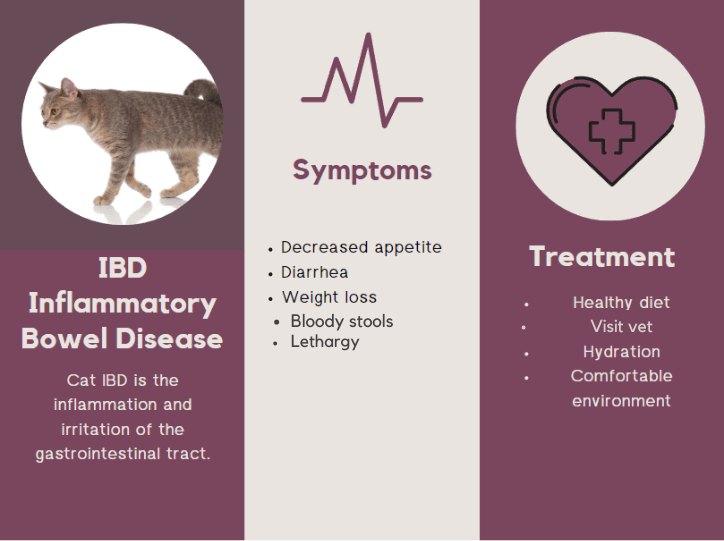
On the other hand, your cat going to the litter box every few minutes with diarrhea could be a sign of inflammatory bowel disease. IBD in cats is similar to irritable bowel syndrome (IBS) or Crohn’s disease in humans. Another prominent sign of IBD in cats is vomiting.
Signs of cat IBD
- Vomiting
- Weight loss
- Diarrhea
- Bloody stools
- Lethargy
- Decreased appetite
Cat IBD treatment
There is no cure for cat IBD, but there are steps you can take to help aid in your cat's recovery. Your vet will provide the best treatment options for your cat. At home, you can help reduce your cat’s symptoms with a clean, healthy diet and constant hydration. Make sure the environment is comfortable for your cat to reduce stress and improve relaxation.
Learn more about what’s normal and what isn’t when it comes to cat poop.
Cat going in and out of the litter box? There’s an app for that
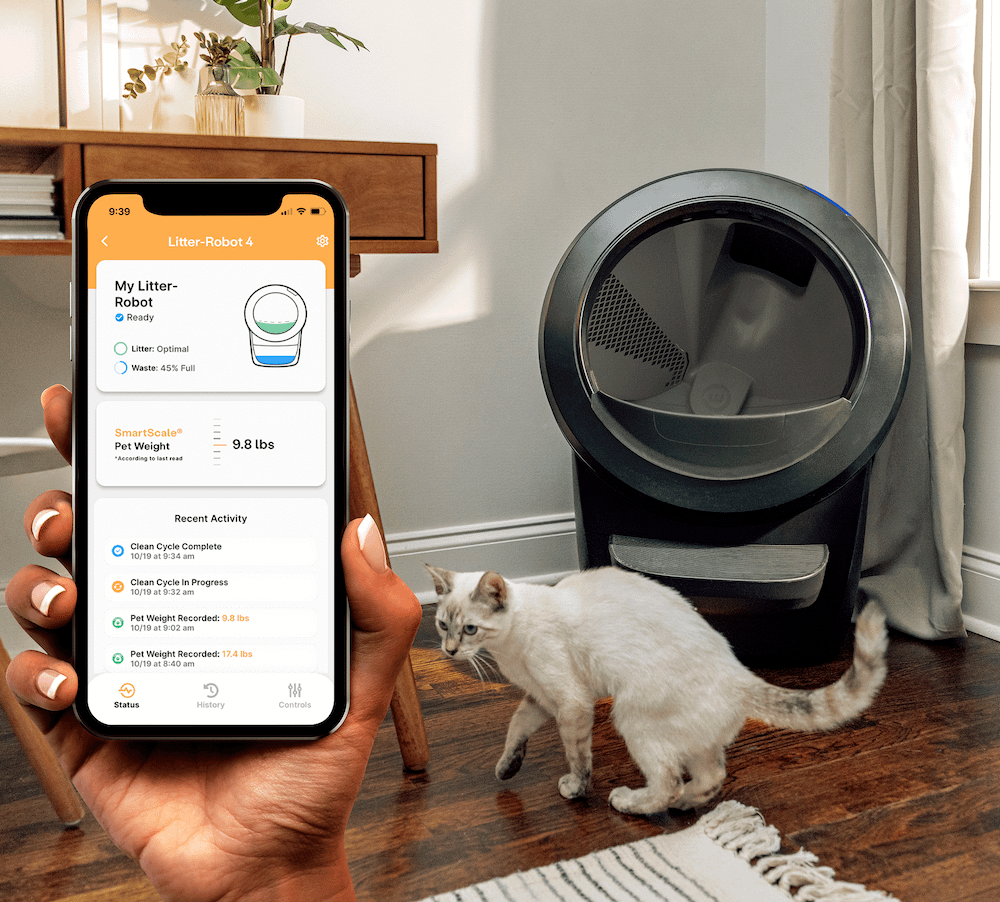
If you’re reading this and you’re unsure about how often your cat is truly using the litter box, then it’s time to change that and start monitoring your cat’s litter box habits! With a smart litter box like Litter-Robot 4, the Whisker app will notify you every time your cat uses the litter box. If you notice a major spike in activity, you can act fast by taking your cat to the vet or the emergency clinic.
How Litter-Robot 4 helps you monitor cat health:
- Records weight: You can track the weight fluctuations of your cat. Monitoring your cat's weight can help you identify health problems quickly based on rapid weight gain/loss.
- Tracks litter box usage: Litter-Robot allows you to track how often your cat visits the litter box and how often the unit completes a cycle. You’ll be able to see trends in your cat's bathroom habits that help you identify crucial health issues, such as frequent cat urination.
- Monitors litter and waste levels: The Whisker app also allows you to monitor the litter and waste levels of your Litter-Robot. A clean litter box is essential to good cat health, so knowing when to refill the litter or empty the waste drawer will help ensure that your cat is always happy to use the litter box.
In addition to app notifications that provide recent insights into your cat’s health, Litter-Robot is self-cleaning—meaning you never have to scoop again. However, it’s a good idea to keep an eye on your cat’s litter box habits, regardless of whether you’re the one cleaning the box.
With a self-cleaning litter box like Litter-Robot, you’ll be able to monitor the litter box behaviors of your cats and act quickly when issues arise. So, if you notice your cat going to the litter box more than usual, you had better get to your veterinarian as soon as possible.
FAQ
How long can cats hold their pee?
Cats can typically hold their pee for about 24 to 48 hours. If a cat is holding their pee for longer than this, it could indicate a health problem such as a urinary tract infection or blockage. It's essential to monitor your cat's litter box habits and seek veterinary care if you notice any changes.
What are the signs that my cat might have a urinary issue?
Symptoms of urinary issues in cats can include frequent or unproductive trips to the litter box, excessive grooming of the genital area, urinating in unusual places, discolored or foul-smelling urine, and visible discomfort or pain during urination. If you notice any of these signs, it's important to consult with a veterinarian as soon as possible.
Sources:
- Feline Urethral Obstruction: Diagnosis and Management
- Urinary Obstruction in Male Cats
- Current Thoughts on Pathophysiology and Treatment of Feline Idiopathic Cystitis
- Urinary tract infection and subclinical bacteriuria in cats: A clinical update
- Constipation
- Prevalence, Risk Factors, Pathophysiology, Potential Biomarkers and Management of Feline Idiopathic Cystitis: An Update Review
- Feline lower urinary tract disease (FLUTD)
- Inflammatory Bowel Disease
